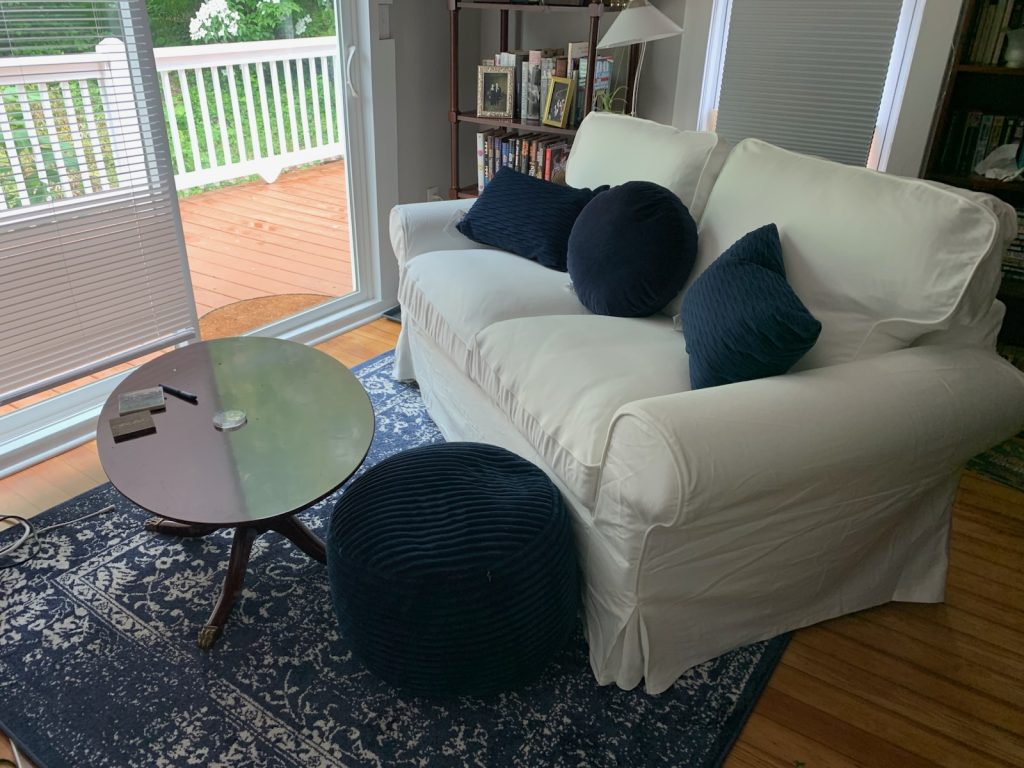Life, My Books
The Abandoned Garden
I may have vastly underestimated what a garden that had been abandoned for years would be like when I wrote Tea and Empathy. I’m facing the same thing, and it’s absolutely crazy.
From what I understand, the person who used to live in this house had done a lot of work on the yard, planting a lot of trees and flowers. Then he had some kind of mental health issues and stopped maintaining the house and yard, becoming a hoarder, so the house and yard were full of junk. Then he abandoned the house entirely. A few years later, the people I bought it from bought it, cleared out the junk and restored and remodeled the house. They took down some trees that were too close to the house and must have cut down everything in the lawn because it was just about bare when I looked at the place, with only a few daffodils coming up around the shrubs and trees that were left.

I first saw the house in late March, then started moving in early April. And then the lawn exploded. So much stuff sprang up. A lot of it was weeds, but a lot of it was good plants, and the trick has been telling the difference. I figure that any of the good stuff that’s survived on its own all this time is a good plant to keep around because it means I won’t have to baby it. I’ve tried using the identification feature on my phone, with mixed results. There are some things I know it’s right about, some things I know it’s wrong about, and different photos of the same plant will be identified as different things. Then there are things I thought it was wrong about that it turns out to be right about.
There are masses of daylilies all over the front, side, and back yard, in huge clumps. I understand they need to be divided and spread out more at the end of the growing season. These have been on their own for a long time and seem to be doing okay, so I don’t know if I’ll bother doing anything to them.

There are hostas everywhere, a number of varieties, up under trees and in flowerbeds. There’s a big lilac bush, a couple of dogwood trees of a variety that keeps blooms for a long time, and a huge redbud tree. There’s a mass of spirea that the bees and butterflies are loving. There’s a bunch of plants that may be milkweed. Whatever it is, the bees and butterflies are all over it. I’m generally keeping anything the bees and butterflies like.
One thing the phone may have been right about, after all, is this ugly, thorny thing I was sure was a weed but that the phone said was raspberry plants. I found some back against the fence that may not have been cut down that are producing berries. I met someone who knew the man who used to live here, and she said he did grow raspberries. But they’ve spread. They’re all over both the front and back yards. I’d pondered leaving them alone until the fall and then transplanting them to a better place, but there’s a whole thicket farther up the hill, and that should be enough raspberries. I don’t want them all over the yard because they’re thorny and ugly. And, to be honest, I’m not a huge fan of raspberries. They have gritty little seeds and not a lot of flavor (though that may be because I’ve only had supermarket raspberries. I don’t know what these will be like). I doubt I’ll get enough for jam, but we’ll see.
There are some plants that I know are invasive. They’re the first things local gardeners warn me about. One is a plant called garlic mustard, and it’s all over the yard. Pulling it up is a massive undertaking. I got the plants from last year that were going to seed, and now I have to get this year’s plants before they can go to seed. The trick is that they look similar to other plants that are growing in the yard, so I have to be careful what I pull, and there’s so much of it that it leaves the ground bare when I dig them all up. I’m throwing wildflower seeds into the bare spots.
Then there’s something called tree of heaven, which is apparently very invasive, very aggressive, and even spreads a substance that’s toxic to other plants, plus it’s the host plant for the spotted lanternfly, another invasive species that’s a threat to the local grape growers at the wineries. There must have been a big one growing here that got cut down because another was trying to grow from the stump. I normally try to avoid much use of chemicals in gardening, but this is one where you cut it down and then poison the heck out of it. I’ve been cutting these down and pulling up seedlings when I find them.
I’ve got a lot of something that’s either catalpa or an invasive called princess tree. Either way, they’re very fast-growing because there was nothing there in late March and now they’re taller than I am. I’m killing the ones close to the house because I don’t want trees right against the house.
The previous owner didn’t leave any herbs that I’ve found. The raspberries seem to be the only edible plants (well, supposedly you can cook and eat the garlic mustard, but I’m not going to try, and there are some wild strawberries, but apparently they’re not edible). So that’s different from Elwyn’s garden.
Unfortunately for me, the garden isn’t at all related to my work and earns me no money, unlike Elwyn, so I’m fitting in that work around my writing work. I’m spending about an hour a day pulling weeds and cutting things back. Right now, I’m just trying to keep it from being an eyesore. I may have to wait until next spring to actually plan what I want to do with the lot. I’m hoping to keep it mostly natural with ground cover and flowers instead of grass. And preferably fewer weeds.

